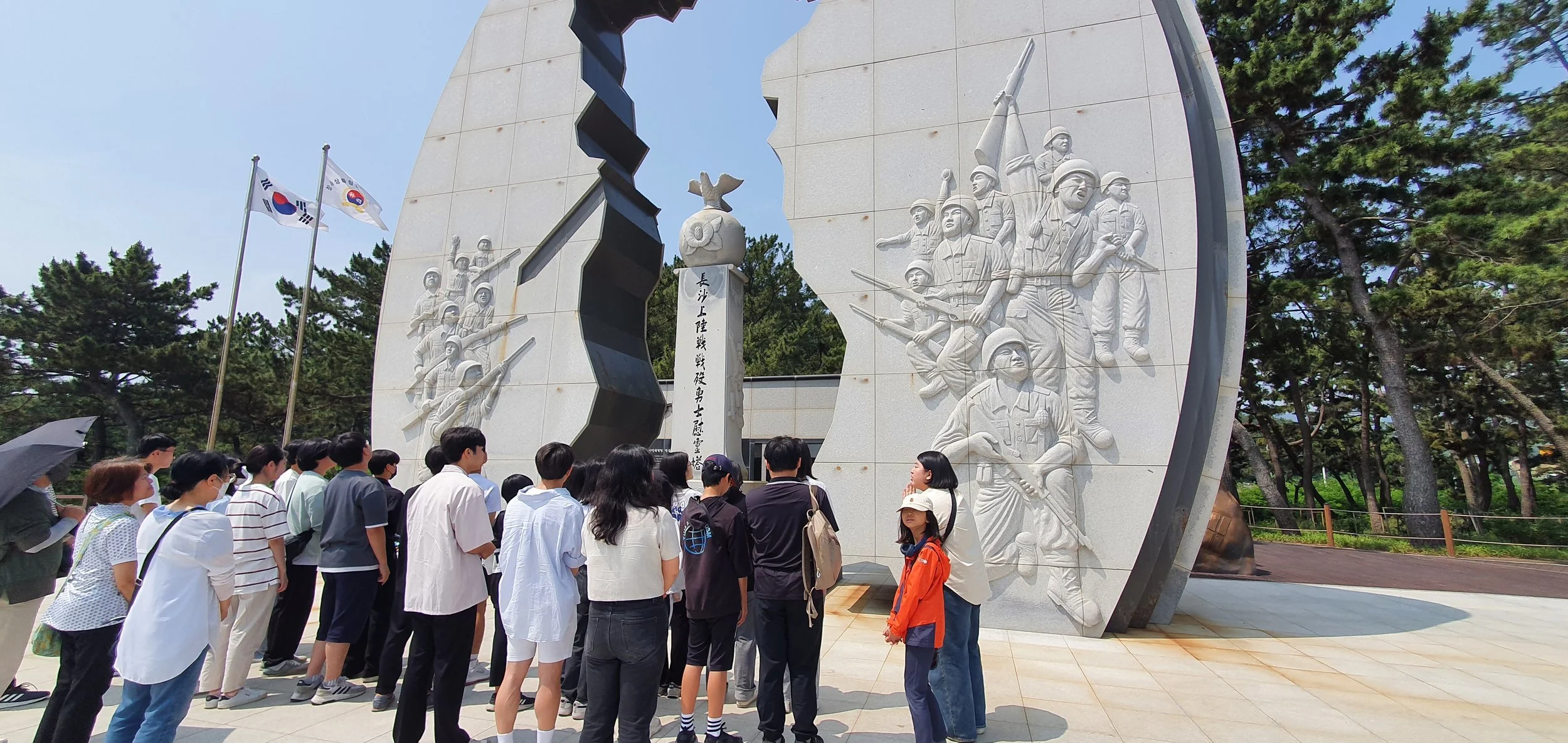WFWP Daegu holds the 2023 'TongilHae Dream'
Written by: WFWP Korea
On June 11, the Daegu branch of WFWP Korea held the "2023 TongilHae Dream'' program with 33 youth participants. The program was organized for youth to explore historical places related to the peaceful reunification of the two Koreas and to learn about the importance of reunification through lectures and hands-on activities.
The participants, who departed from Daegu for Yeongdeok at 8:30 a.m., listened to a lecture on the “Vision of Peaceful Reunification for Future Generations” and participated in the program by visiting the Jangsa Landing Operation Battlefield and Jeonseung Memorial Hall, Samsa Marine Park Manghyang Pagoda, Kyungpook National University Jonggak and volunteer activity.
One participant said, "Honestly, I've heard a lot of lectures about the reunification of the two Koreas, but it didn't really hit me, and at school, they emphasized more on the practical aspects of reunification, so I didn't have a very positive opinion about reunification. However, I was very impressed through today's program in Yeongdeok and I sincerely hope that the reunification of the two Koreas will happen soon so that tragedies like this won't happen again, and the meeting of separated families can come true."
About the Locations Visited:
Jangsa Landing Operation Battlefield and Memorial Hall
The Jangsa Landing was a landing operation carried out at Jangsa on the east coast, opposite to the west coast of Incheon, in 1950 to achieve the success of the Incheon landing and to disrupt the North Korean army. The Jangsa Landing Operation Battlefield includes a memorial tower honoring the battalion of 772 student soldiers averaging 17 years old who heroically gave their lives to carry out that operation, a veterans' memorial park and Korea's only memorial hall on the sea that was created in the form of Munsanho, the ship that the landing troops boarded.
Samsa Marine Park Manghyang Tower
Built in 1995 in Samsa Maritime Park, the Manghyang Tower is dedicated to the people of North and South Korea who lost their homes and remember the pain of the Korean War.
Gyeongbuk Daejong Bell
The Gyeongbuk-daejong bell represents the great will of the three million people who celebrated the 100th anniversary of the founding of Gyeongsangbuk-do (1996) to promote the unity of the people, pray for the reunification of Korean peninsula and national unity and wish for prosperity in the Pacific Rim era. The shape of the bell is modeled after King Seongdoek's bell, which was built during the Unified Silla Dynasty, and features a statue of Cheonin and a statue of Bicheon. The statue of Cheonin, who pours money, symbolizes the home of culture and arts, and the statue of Bicheon, who holds an apple, symbolizes the abundant fruits of Gyeongbuk.




